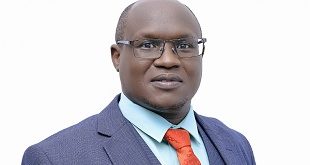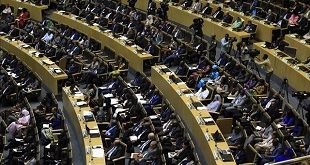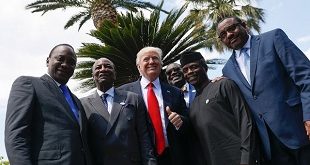
By Obiageli Ezekwesili and Paul Collier
Early results from a survey in Africa showed that pupils were taught for only two hours a day
World leaders, governments, aid agencies, and NGOs, will converge on the Korean port city of Busan over the coming days to talk about making development aid work better in poor countries, including those affected by conflict. They meet at a time when the global economy faces new turmoil and aid budgets are tight.
In Africa, economic growth has been strong at close to 6 percent a year over the past decade. Increased domestic revenue in fast-growing economies, coupled with aid, has financed low-cost high-impact development activities such as the training and deployment of thousands of health workers in Ethiopia. As a result, there have been remarkable achievements in many countries, including reductions in child mortality and progress in getting more children into primary school.
But things are different in conflict-affected countries in Africa that are home to many of the world’s ‘bottom billion’—those people who face the aftermath of violence in their daily lives. Not a single poor conflict-affected country has to date achieved any of the Millennium Development Goals that fall due by 2015. These countries have made weak or uneven progress because they lack strong policies and institutions and have tended to undergo dramatic collapses in economic growth. A combination of growth, policy management, and decent public services will help bring them back on track.

Meeting the staggering demand from citizens for public services is fundamental to peace, stability and growth; yet services delivered by governments—often barely established—often fall short, resulting in an ocean of unmet human needs. Weak public health or education systems frequently do not inspire the sort of teaching or healing that would make a real difference. Governments and donors need to seize the opportunity in conflict-affected states to rebuild these systems for results, as well as to rope in every partner who has something to contribute by way of reach or efficiency.
Governments can deliver key services in places where the public system can be readily reformed to yield results, but they could also oversee and fund the complementary work of others. For instance, conflict-affected states often attract some of the most dedicated NGOs in the world. If the convening power and financial scale of governments and the work of these NGOs were to converge into a coordinated national solution, the results for the bottom billion could be rapid and spectacular. There are nascent examples of this in Africa. In South Sudan, a flexible unit in the ministry of education coordinates youth and adult education—critical for those who have missed schooling at the right age—provided by a range of NGOs and faith-based organizations.
 The World Bank’s World Development Report 2011 on Conflict, Security and Development identifies these “state-NGO (and) state-private sector programs for service delivery” as part of a new way of doing business in conflict-affected states, critical for restoring confidence, transforming institutions and reinforcing the legitimacy of the state.
The World Bank’s World Development Report 2011 on Conflict, Security and Development identifies these “state-NGO (and) state-private sector programs for service delivery” as part of a new way of doing business in conflict-affected states, critical for restoring confidence, transforming institutions and reinforcing the legitimacy of the state.
In the medium term, governments could also harness private sector efficiency to deliver publicly-funded services. A recent example from Lesotho—not a conflict-affected state but one with tremendous health needs—is the government’s visionary partnership with a private healthcare consortium to build and manage the brand new Queen ’Mamohato Memorial hospital, part of a network that includes referral clinics. Modern healthcare, with built-in accountability for quality services, will now be available to hundreds of thousands of Basotho citizens through this network.
This model may not work in every conflict-affected state. But it is definitely possible as systems mature and stability becomes the norm. New clinics in Lesotho’s densely populated Maseru district have already seen demand for services doubling, an encouraging sign in a country that is fighting hard to improve its health indicators. Lesotho is definitely a space to watch and learn from.
Another promising approach that helps improve health services is results-based financing of frontline healthcare facilities. Here, health center teams are paid based on proven delivery of a set of services. Healthcare is starting to turn around visibly in post-conflict countries like Burundi and Rwanda partly with their adoption of this approach—one among many ways to improve results.
Regardless of who delivers services, there must be transparency about effectiveness. Early results from a recent survey led by think tanks in Africa showed that students in public primary schools in one country were taught for only two hours a day, while in another, only a third of clinicians were able to correctly diagnose diarrhea with severe dehydration. Precise, actionable information like this can help countries take decisions on where to direct reforms, and to know whether their reforms are working. Imagine if such information were available to guide efforts in South Sudan, or Sierra Leone, or Liberia.
The Busan focus on conflict-affected states is timely with the clock ticking down towards the Millennium Development Goals in 2015. But success will lie in the relentless pursuit of what works and in discarding what does not. Nobody should have to tolerate schools in which students do not learn, and clinics where doctors and nurses do not heal. Especially not people long-wearied by war and conflict, with great needs—and indeed great expectations.
Obiageli Ezekwesili is Vice President for Africa at the World Bank, and Paul Collier is Director of the Centre for the Study of African Economies at Oxford University, and author of “The Bottom Billion: Why the Poorest Countries are Failing and What Can Be Done About It” (2007)
 The Independent Uganda: You get the Truth we Pay the Price
The Independent Uganda: You get the Truth we Pay the Price


